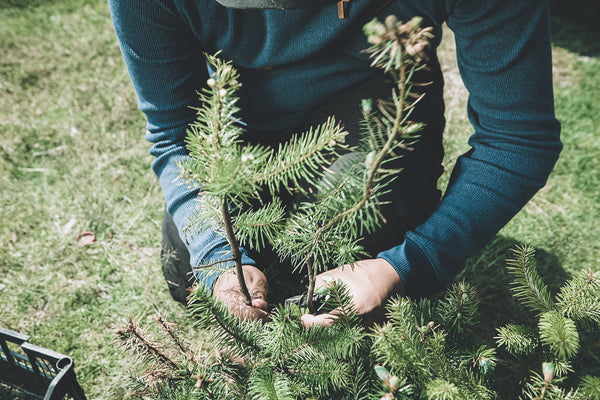
Get news, updates, & event Info delivered right to your inbox:
Nope! Reforestation has been getting a lot of attention in recent years, with some touting it as the #1 climate change solution, and others worrying that it’s taking the spotlight away from other sustainability priorities. So we’re here to set the record straight: we don’t believe that planting trees is a cure-all for the planet’s problem of pollution and climate change. There, we said it!
Trees definitely deserve their moment in the sun, because planting ecologically appropriate seedlings in areas that have been degraded or deforested is a powerful restoration strategy. But while this is obviously our focus as a reforestation nonprofit, we fully recognize that it should be considered in context of the bigger challenge at hand.
Think Holistically
Many scientists worry that in the wave of enthusiasm for getting trees in the ground, other actions that are equally as important but trickier to implement, are neglected. And they’re right, because if we don’t conserve existing forests (and other ecosystems), phase out fossil fuels, and get our emissions under control, it might not matter how many trees are planted.
Scientists also worry that climate change effects like drought, disease, and wildfires will reduce the amount of carbon that forests are able to absorb over time. And changing climatic conditions are already shifting the growing ranges of many species.
While we can never truly predict the future, we can follow the data and learn what works and what doesn’t. What’s clear is that while tree planting is greatly beneficial, it isn’t the only thing we should be doing. And promoting it as a silver bullet risks missing the forest for the trees.
So What Should We Do?
To keep our temperature increases below 1.5-2°C, we have to get at the roots of the issue — and unfortunately, they run deep. Taking bold action to protect existing forests and reduce global greenhouse gas emissions is essential and should receive the same attention as land restoration.
What else? Well, here’s a start:
- Invest in renewable energy — including smart grids, batteries, and emerging technologies.
- Support endangered wildlife through habitat conservation.
- Halt fossil fuel extraction and any related subsidies.
- Promote gender equality because women play a key role in addressing climate change.
- Hold major polluters accountable.
- Facilitate the safe containment of greenhouse gas chemicals such as hydrofluorocarbons.
- Support direct action in communities that are working towards sustainability.
- Protect and restore peatlands, because they store enormous amounts of carbon — and all other ecosystem types.
- Prioritize education in math, science, climate, and technology.
- Eliminate corruption in politics, because that results in damaging environmental policies.
- Remove dams and restore riparian zones to restore watershed health.
- Promote democracy, equality, and climate justice for communities of color.
Let’s do all of this AND plant trees along the way.
Plant the Right Trees, The Right Way
When we do focus on reforestation, it’s important not to simply plant trees anywhere just to say you did. Many factors need to be considered to ensure genuine environmental and social impact. That means making assessments of the land and current land use, knowing which local tree species will be most suitable now and in the future, having processes to scale seedling production at nurseries, developing a solid pre and post planting plan, and ensuring local staff or volunteers are on board. And that’s all before a single tree is planted!
Including local communities is essential because it not only improves project success and tree survival rates, it also reduces the risk of future deforestation. And besides, making sure we’re having a positive social impact is just the right thing to do.
Some other things we consider:
- What tree species will help the new forest be resilient to the effects of climate change?
- How will the young trees be cared for in the first few years of life?
- Will the project comply with regulations set by local and regional governments?
- Are there any endemic wildlife species that require a particular food or habitat?
- What are the potential challenges to the long-term success of this project?
- What other environmental activities are recommended alongside reforestation?
By planting trees thoughtfully, we ensure that quality is prioritized over quantity — and that reforestation is conducted in a way that benefits nature, people, and wildlife.
And we look to experts in related fields to apply the same level of detail to other angles of addressing climate issues. It is by working together across different sectors that we will start to see the biggest possible impact.
